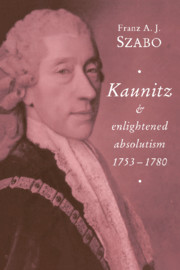8 - The problem of Hungary
Published online by Cambridge University Press: 28 August 2009
Summary
Within the Habsburg Monarchy of the eighteenth century, the Kingdom of Hungary was sui generis. Though not all the territories which were subordinate to the ancient crown of St. Stephen (Hungary proper, the Kingdom of Croatia-Slavonia, the Grand Principality of Transylvania, the Banat of Temesvár, and the Military Frontier which stretched along the border with the Ottoman Empire from the Adriatic to Transylvania) were governed in the same fashion, all remained largely outside the purview of the reforms described in detail in the preceding chapters. The status of the Hungarian lands within the Habsburg complex remained ambiguous, with the kingdom's degrees of sovereignty and association remaining matters of debate even after the 1711 Peace of Szatmár and the 1723 acceptance of the Pragmatic Sanction by the Hungarian Diet had set the constitutional framework. By these two agreements the Kingdom of Hungary was hereditary in the male and female lines of the House of Habsburg, as well as “indivisible and inseparable” from the other Habsburg territories. Yet the indigenous political institutions and socio-economic structures, dominated by an assertive nobility, remained largely intact and continued to exercise such control as to make the assertion of the royal prerogative in a manner analogous to Bohemia and Austria virtually impossible.
- Type
- Chapter
- Information
- Kaunitz and Enlightened Absolutism 1753–1780 , pp. 303 - 345Publisher: Cambridge University PressPrint publication year: 1994

